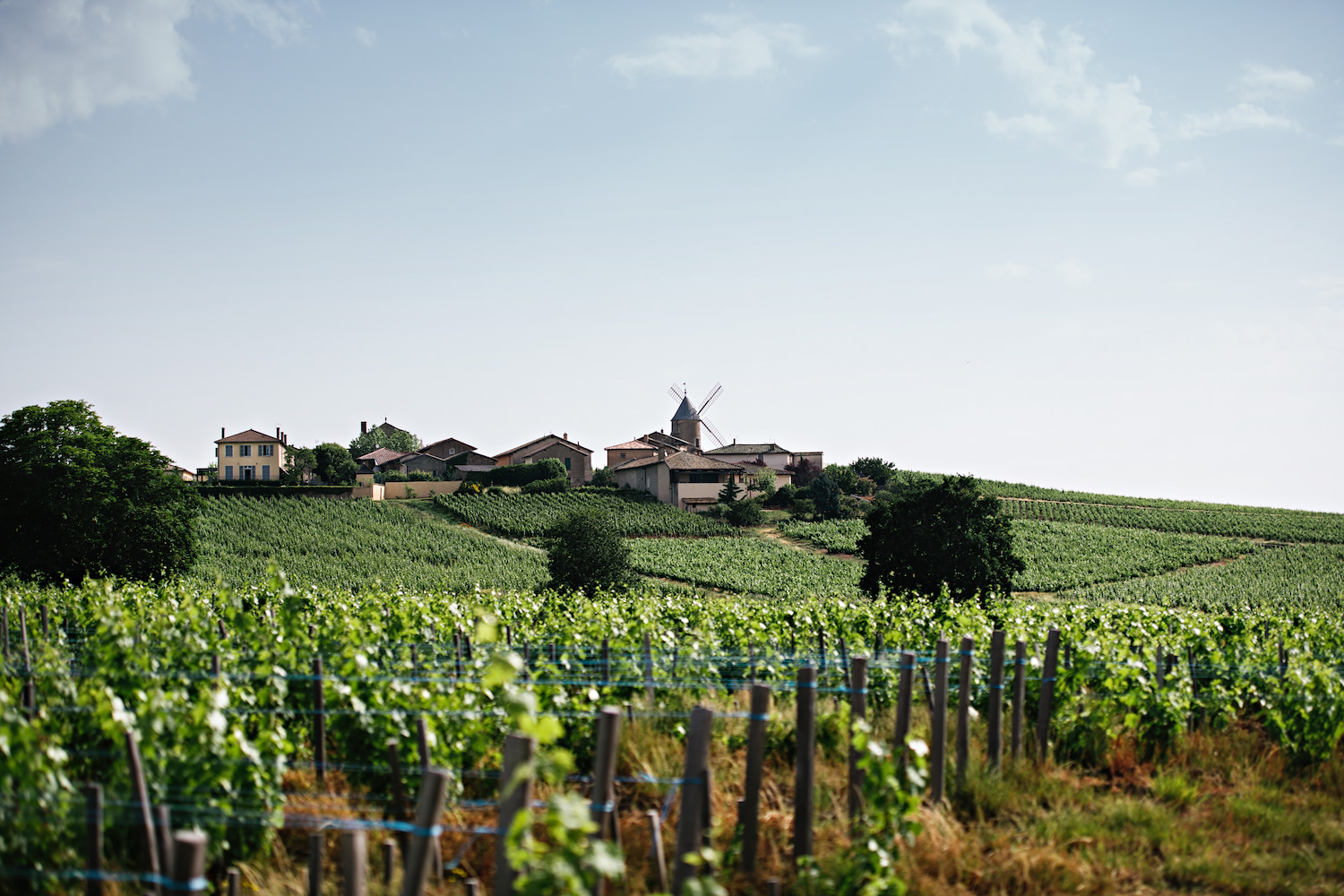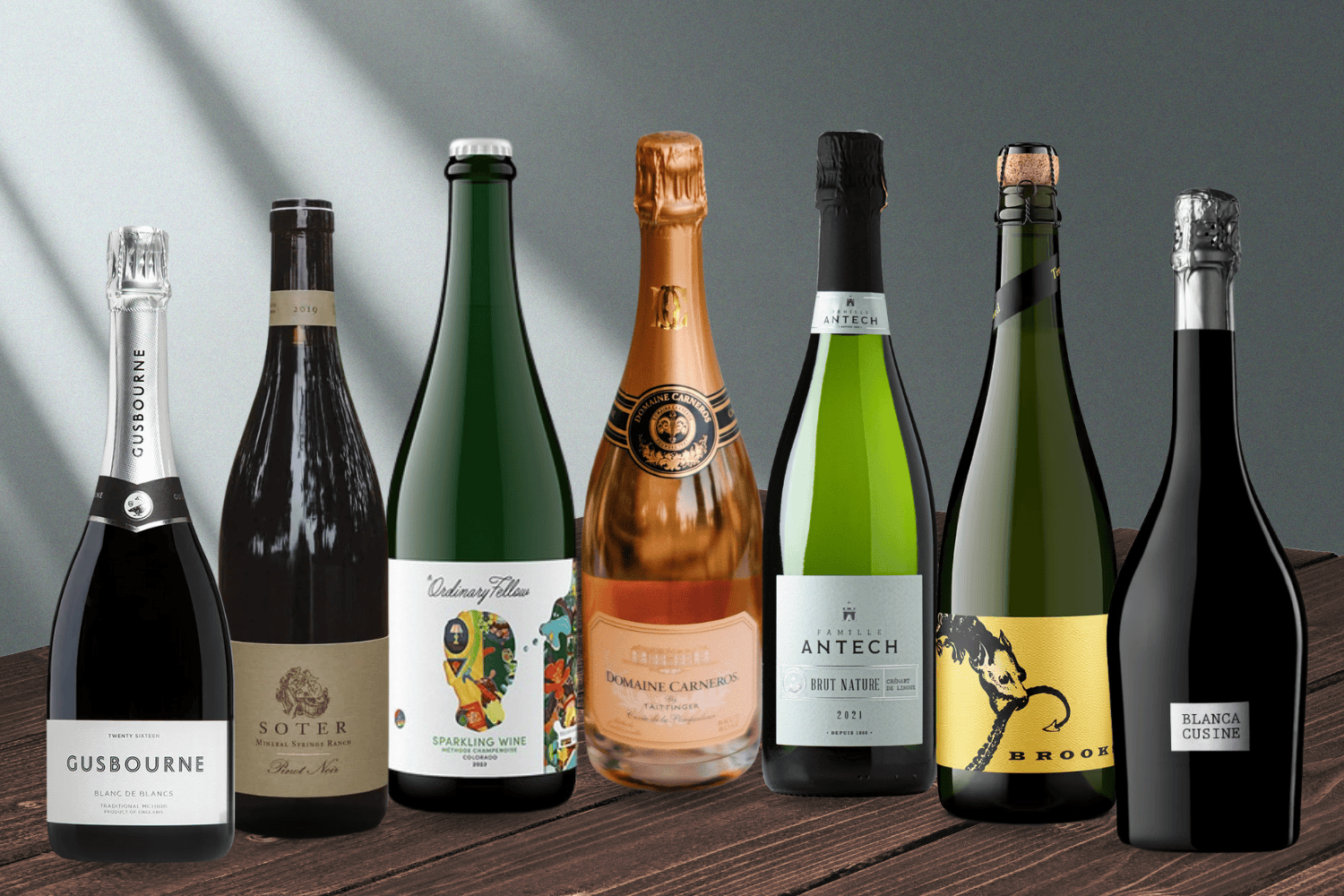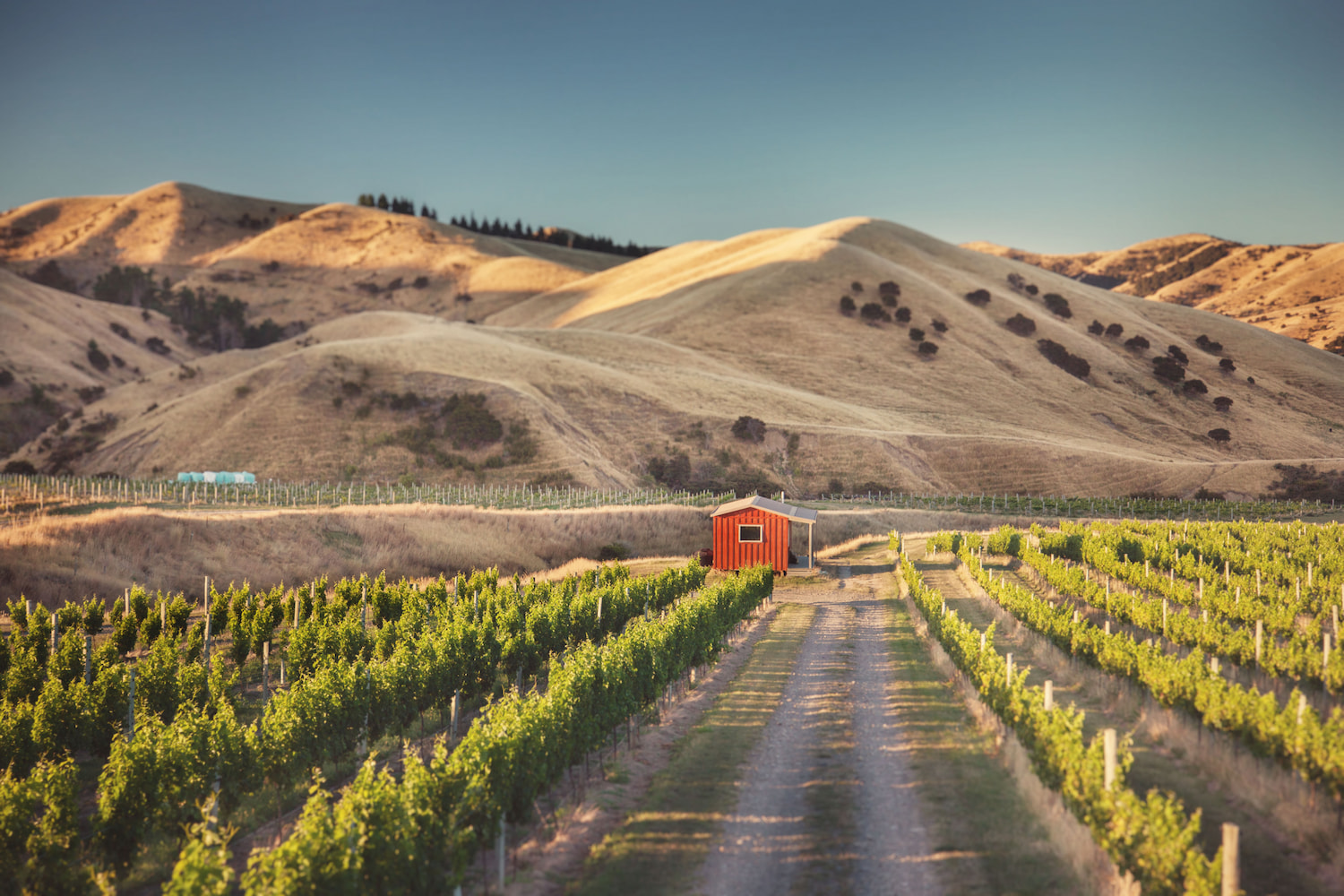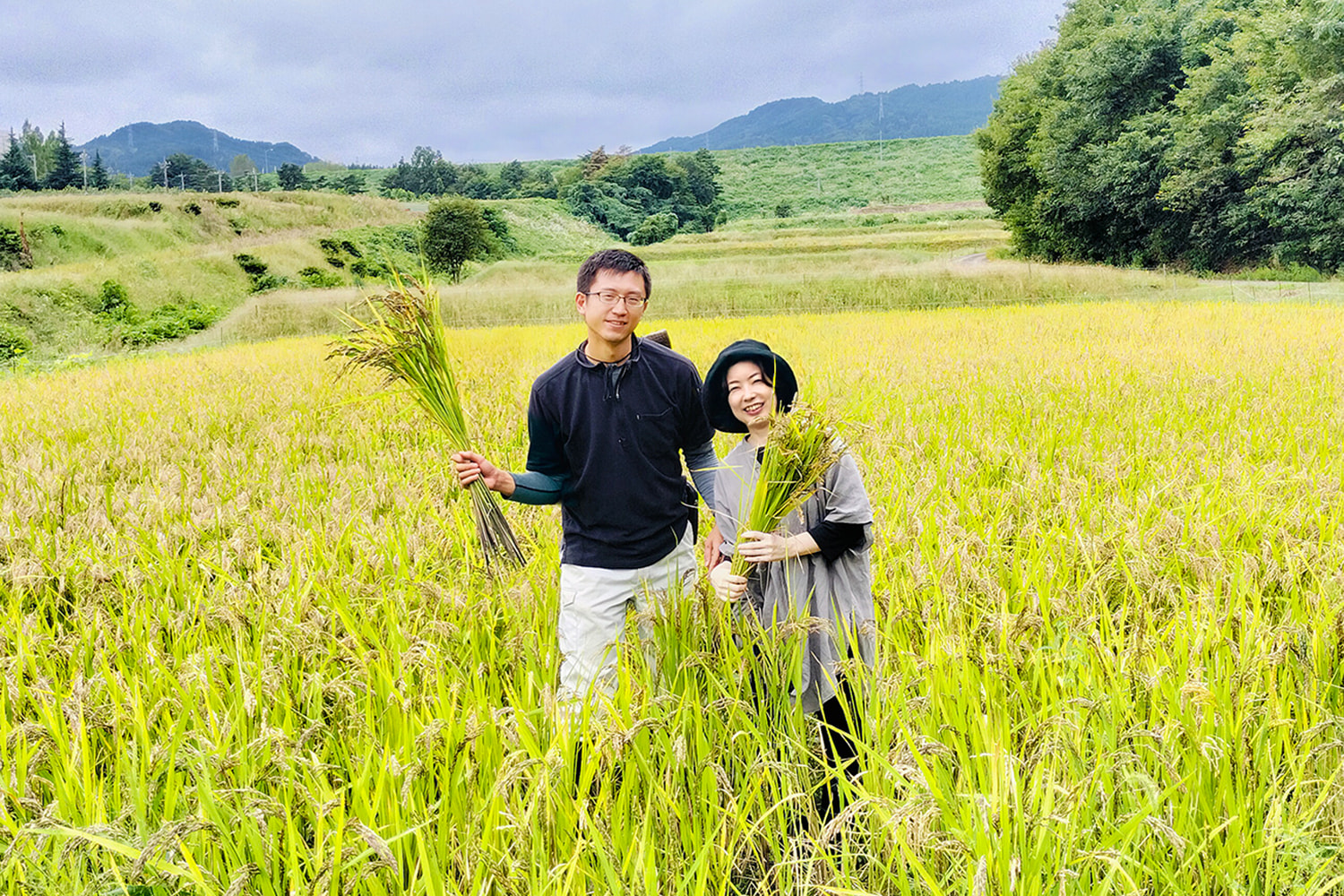North Stars:

Heritage Value

Production & Consumption

Community Support
“You’re often speaking with the person who farmed the vines or made the wine and no two visits are the same.”
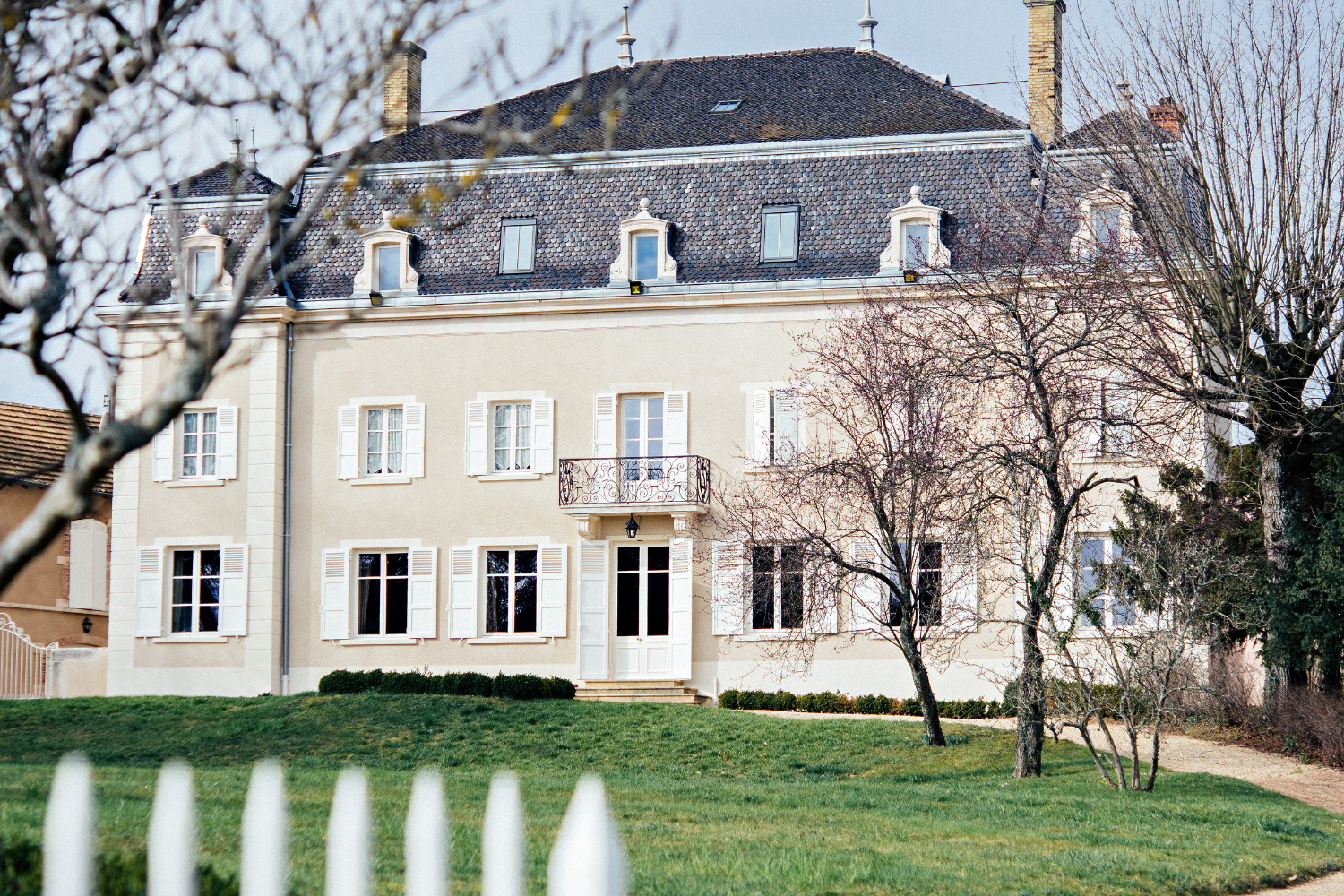
Exterior view of Château du Moulin-à-Vent - Le Château. Courtesy of Château du Moulin-à-Vent.
Partnership
Moulin-à-Vent (MAV) has always had the bones of a world-class wine destination. Its vineyards, clustered around the stone windmill in Romanèche-Thorins, produce some of the most age-worthy and mineral-driven Gamay in the world. The wines stand out for their balance of finesse and structure — qualities that have earned the appellation international respect from collectors, sommeliers, and importers. But for years, it flew under the radar as a destination for wine-loving travelers.
That’s starting to shift. A new generation of winemakers is not only raising the bar on farming and cellar work, they’re actively opening up the region to visitors. Accommodation options have grown. Restaurants have evolved. And thanks to Cap Moulin-à-Vent — a tight-knit group of 14 producers — the appellation’s winemakers now do more than just talk about sustainability. Many estates have achieved organic and biodynamic certification or are currently in transition.
There’s also a push for Premier Cru classification, a formal recognition of the region’s top vineyards that would mark a first for Beaujolais. All of this is happening during a time when wine travelers seek to explore places beyond the most obvious stops. Moulin-à-Vent has become a place to linger, not pass through.
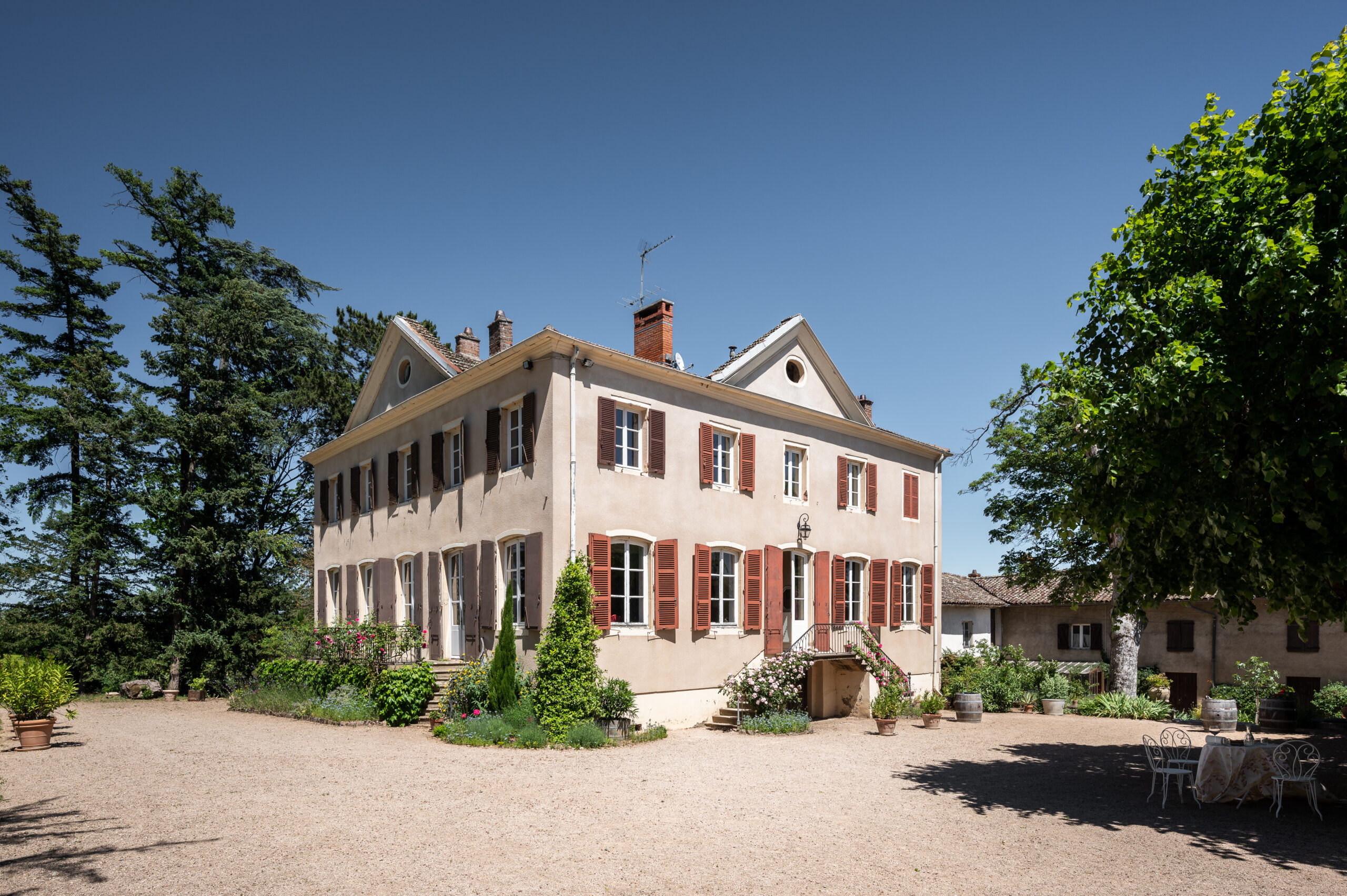
The domaine of Château des Gimarets. Courtesy of Château des Gimarets.
A Wine Region on the Cusp
Moulin-à-Vent sits between the communes of Romanèche-Thorins and Chénas, about 25 minutes south of Mâcon. It’s one of ten Beaujolais crus, and often considered the most Burgundian in style. That reputation comes from its granite-rich soils, which give the wines power, acidity, and the ability to age for more than a decade.
While most wine from the appellation is bottled under the Moulin-à-Vent AOC, many producers with access to or ownership of the most vaunted parcels bottle their wines with vineyard names like Champ de Cour or La Rochelle. While oak and extraction levels can vary, the wineries share a collective commitment to transparency in terroir and quality. And yet, great wines start around 20 euros, while at the high end, they rarely exceed 50. In short, MAV wines offer incredible value.
Even more exciting is the momentum around landing an official Premier Cru classification, with growers documenting soil profiles, sun exposure, and vine age to support the process. But even without the legal recognition, many sommeliers already treat Moulin-à-Vent with that level of respect. For wine drinkers who appreciate a mix of complexity, richness, and aging potential, it’s a region worth understanding, and there’s no better way to do it than tasting in situ.
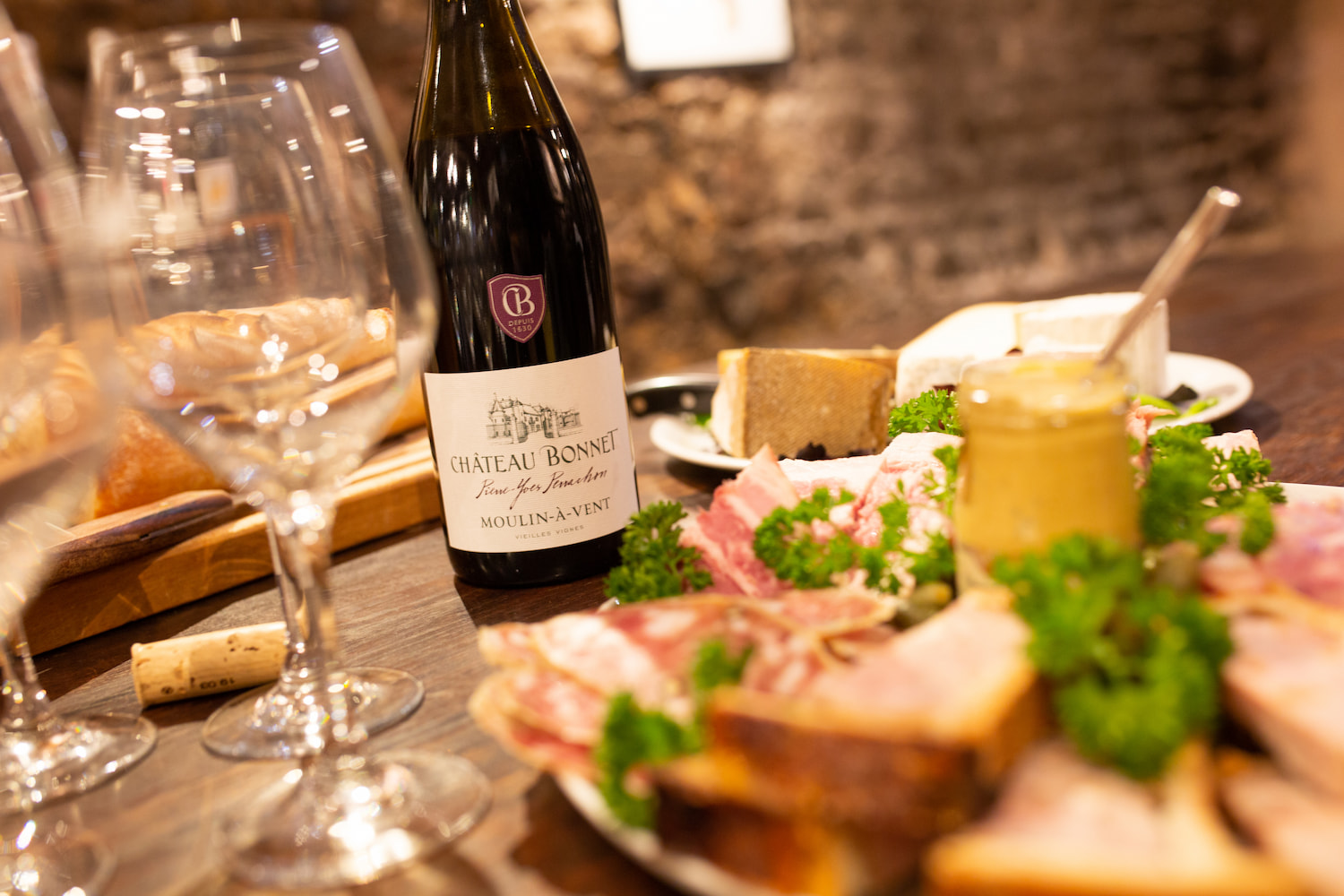
Château Bonnet wine bottle shot. Courtesy of Château Bonnet.
Tasting Wine in Moulin-à-Vent
At Château du Moulin-à-Vent, one of the region’s largest and established names, tastings might be hosted in the estate or in a restored chapel. Guests can compare single-parcel wines across vintages, learning how the granite soil, shaped by hands and time, informs each cuvée. The tasting experience is immersive, with a level of detail and generosity that gives visitors a better understanding of the land. The property, with its expansive grounds and gravel-courtyard, also plays host to an annual jazz festival. Château des Jacques also offers tastings, schedules tours, and has a boutique.
Most producers, however, take visits by appointment only. But once you’re in the door, the experience is informal and heartfelt. These are not staffed tasting counters. Rather, you’re visiting the anti-Napa. You’re often speaking with the person who farmed the vines or made the wine and no two visits are the same.
At smaller domaines like Domaine de Colette, Château Bonnet, and Domaine Paul Janin, visits often happen in working cellars. Some tastings end with impromptu strolls through the vineyards. All end in fond farewells marked by a promise to return.
Perhaps the best time to visit is in July during the Cap Moulin‑à‑Vent association’s most public-facing initiative: the annual Jazz in Moulin‑à‑Vent festival. Held on the last Saturday in May at Château du Moulin‑à‑Vent, the event pairs tastings from all fourteen estates with live jazz performances and an evening concert with international artists. It’s designed to encourage informal dialogue between growers and guests in a relaxed, festive setting. This summer marked the 10th edition of the festival, and plans are underway to expand the program to include vineyard walks, chef-led dinners, and comparative tastings.
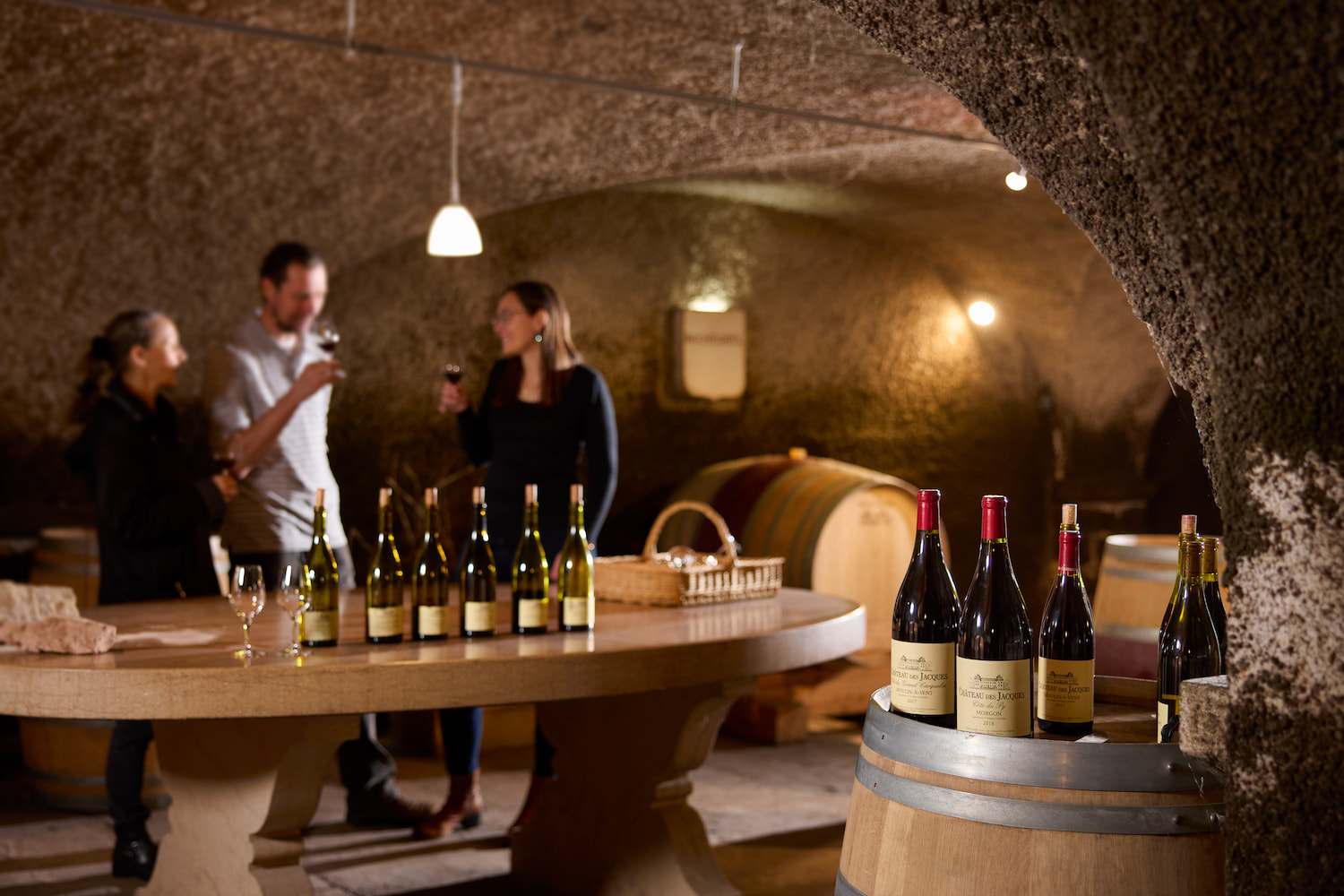
Wine tasting experience at Château des Jacques. Courtesy of Serge Chapuis, Château des Jacques.
Cap Moulin-à-Vent
Cap Moulin‑à‑Vent (CAP MAV) is an association of fourteen leading estates working across the Moulin‑à‑Vent appellation. Formed to spotlight the character and potential of MAV Gamay, the group represents a wide range of terroirs across the appellation, including all 18 officially recognized lieux-dits and a total of 69 vineyard sites spanning Romanèche‑Thorins and Chénas. CAP MAV provides a model of collaboration that elevates the entire appellation through shared standards, strong identity, and collective ambition.
Here’s how to visit members of the organization.
Visit without Appointment
Château du Moulin-à-Vent and Château des Jacques have boutiques for purchasing wine, open without an appointment. A tasting at Château du Moulin-à-Vent can be booked through their website, too.
Visit by Appointment
Locally-owned wineries in MAV: Château Bonnet, Château des Gimarets, Château des Jacques, Château du Moulin-à-Vent, Domaine de Colette, Domaine du Granit, Élisa Guérin, Domaine Paul Janin & Fils, Domaine Richard Rottiers, Maison Le Nid, Domaine Merlin.
All offer visits and tastings by appointment, made through email or phone.
Burgundy-based with wineries in MAV: Domaine de Rochegrès, Domaine Louis Boillot, and Thibault Liger Belair.
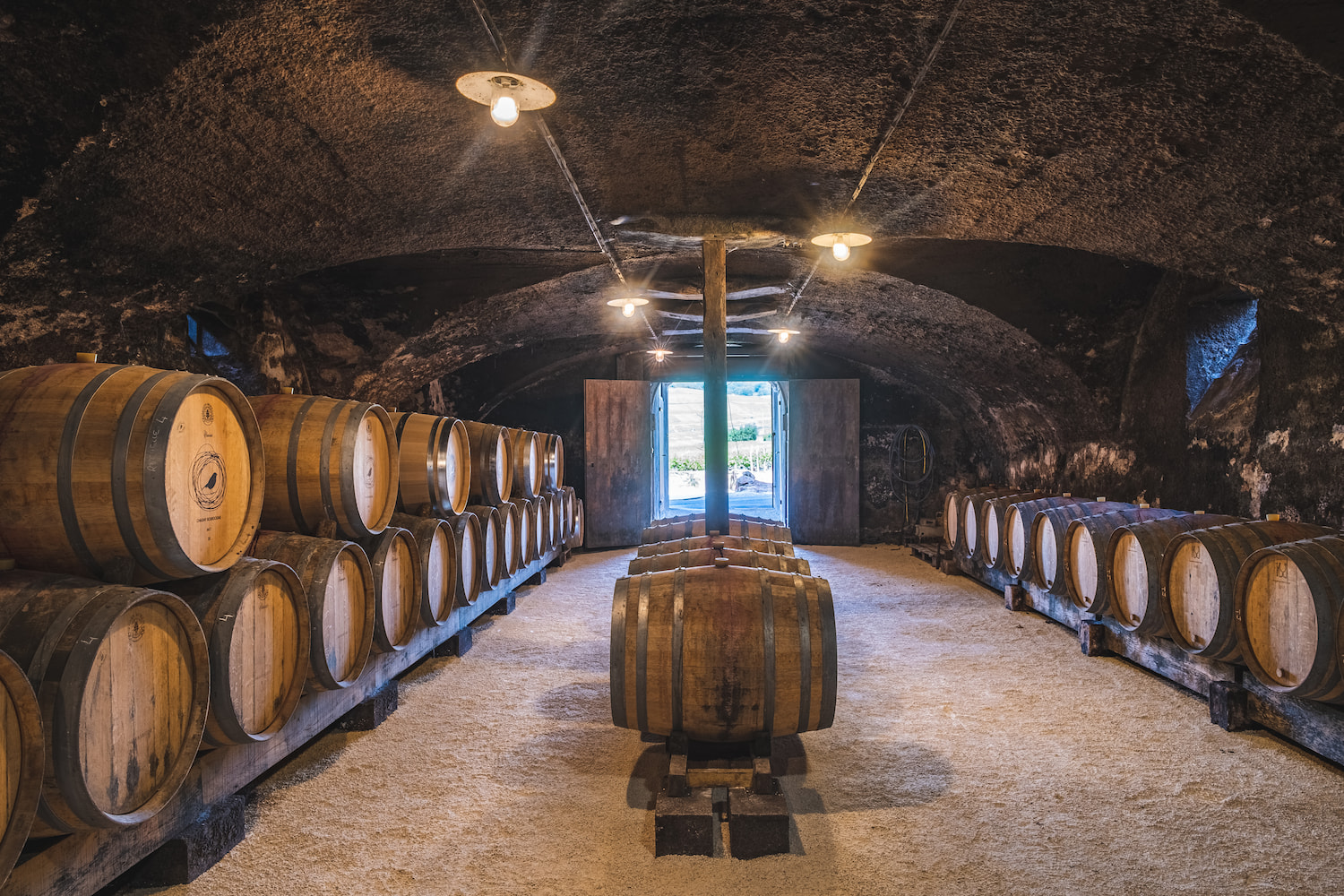
Interior view of Maison Le Nid Cave. Courtesy of Maison Le Nid.
Getting There and Planning Ahead
Moulin-à-Vent is just over an hour from Lyon by car and 25 minutes from Mâcon, where you’ll find a TGV station with service from Paris, Geneva, and Marseille. You’ll need to rent a car to reach the villages, tasting rooms, and restaurants. Public transportation options are limited, and you’ll want the flexibility to move between appointments.
Visit between April and October. Vineyard walks are best in May or September, when the weather is mild and winemakers have more time to host. Tastings should be booked a few days in advance. The Cap Moulin-à-Vent website offers direct links to its producers. As always, bring an extra suitcase for wine – not only are the prices better in Europe in general, but with tariffs in limbo, it’s simply cheaper and easier to check a case of wine on the return home.
Another option is to ship wine home. CAP MAV vignerons use a shipping service allowing you to shop at multiple wineries, organize a collection of your purchases in one box, to have it shipped back to the States. While you won’t avoid tariffs, you’ll pay local prices, excluding the VAT tax. The best option is to ship through Mail Boxes Etc. run by Jules Rousseaux. (+33 9 85 60 84 80; mbe3106@mbefrance.fr.) You can always ask for help at the winery, should you need additional assistance.
The trip doesn’t require a full week. Spend two or three nights, taste at four or five domaines, and leave room to explore nearby crus like Fleurie and Morgon, which are practically overlapping. In fact, many producers make wine from several crus.
Or, time your visit for the jazz festival and build your itinerary around it. Either way, you’ll leave with more than a few bottles and good memories. You’ll leave with a new reference point for what makes a wine region worth visiting.

Marcel Je T’aime (Main House) Bedroom view. Courtesy of Marcel Je T’aime.
Where to Stay
Marcel Je T’aime (Main House) – A spacious group rental for up to 15 guests located in Romanèche-Thorins. This fully-equipped house features an indoor heated pool (maintained at 30 °C year-round), private pétanque court, EV charging station, and linens with housekeeping included—all nestled at the heart of the vineyards and a short walk from tasting rooms. More info
Marcel Je T’aime (Apartment) – A cozy, two-bedroom annex next to the main house with a private garden terrace, full kitchen, and bright, modern interiors. Ideal for couples or small families who want independence and style with vineyard access. More info
Domaine de la Serve – A 4-star detached holiday cottage in Lancié (near Moulin-à-Vent), set on a spacious property with a shared pool, garden, and fully equipped kitchen. Ideal for two guests seeking tranquility between vineyard visits. More info
Au Petit Bonheur chez Bambina – A restored 17th-century monastery — now a charming 4‑star guesthouse in Leynes with a shared garden, terrace, and Wi‑Fi. Popular activities available include cycling, hiking, yoga, and tennis. Ideal for couples and families seeking countryside character close to both Beaujolais and Mâconnais vineyards. More info
Les Maritonnes Parc & Vignoble – A 3-star boutique hotel in Romanèche-Thorins with 41 modern rooms, spa, indoor/outdoor pool, spa treatments, electric‑car charging, and direct vineyard access. Its on-site restaurant, Rouge & Blanc, holds a Michelin Assiette and focuses on regional produce paired with local wines. More info.
Hôtel des Grands Vins – A good-value, no-fuss hotel option based in Fleurie, perfect for travelers looking to explore several crus in one trip. More info
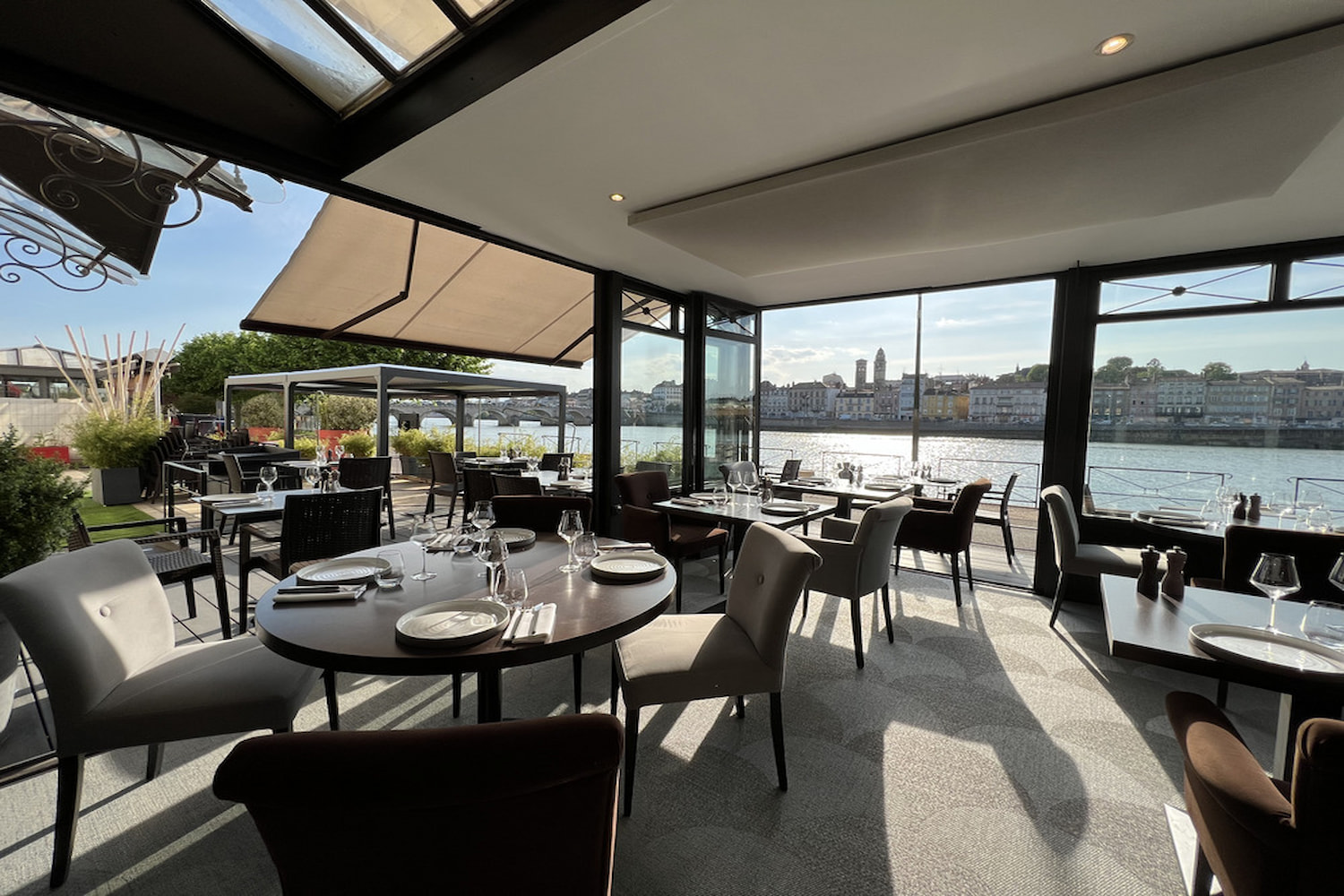
Fine dining with a Saône-side view and warm ambiance at L’Autre Rive. Courtesy of L’Autre Rive.
Where to Eat
Ema – A bistronomic (gastronomic bistro) restaurant in Avenas run by Lyon-trained chefs Margot and Emilien Aucagne. With about 35 indoor seats and a sun-soaked terrace overlooking the rolling Beaujolais hills, the menu features inventive, seasonally driven dishes paired with a curated natural-wine list focusing on organic and biodynamic options. More info
La Table de Chaintré – A 1 Michelin-starred restaurant in Chaintré, run by Chef Sébastien Grospellier and sommelier Floriane Grospellier. Set in a charming village house at the edge of Mâconnais vineyards, the restaurant offers a weekly changing tasting menu (≈ €85) and a wine list featuring regional Burgundy and Beaujolais selections. More info
L’Autre Rive – A contemporary bistro located in Mâcon, a 20-minute drive from the heart of Moulin‑à‑Vent. The menu focuses on regional ingredients—think spring morels or autumn game—prepared with a modern touch. The wine list showcases local producers, including Cru Beaujolais and Burgundy labels. More info
Bistrot Le Sarment – Located in Juliénas, this French bistro recently reopened, thanks to a group of chefs who strive to serve simple but delicious cuisine. This spot comes recommended by local winemakers. (No website. rue Alphonse Burdot, 69840 Julienas. Contact info on FB.)
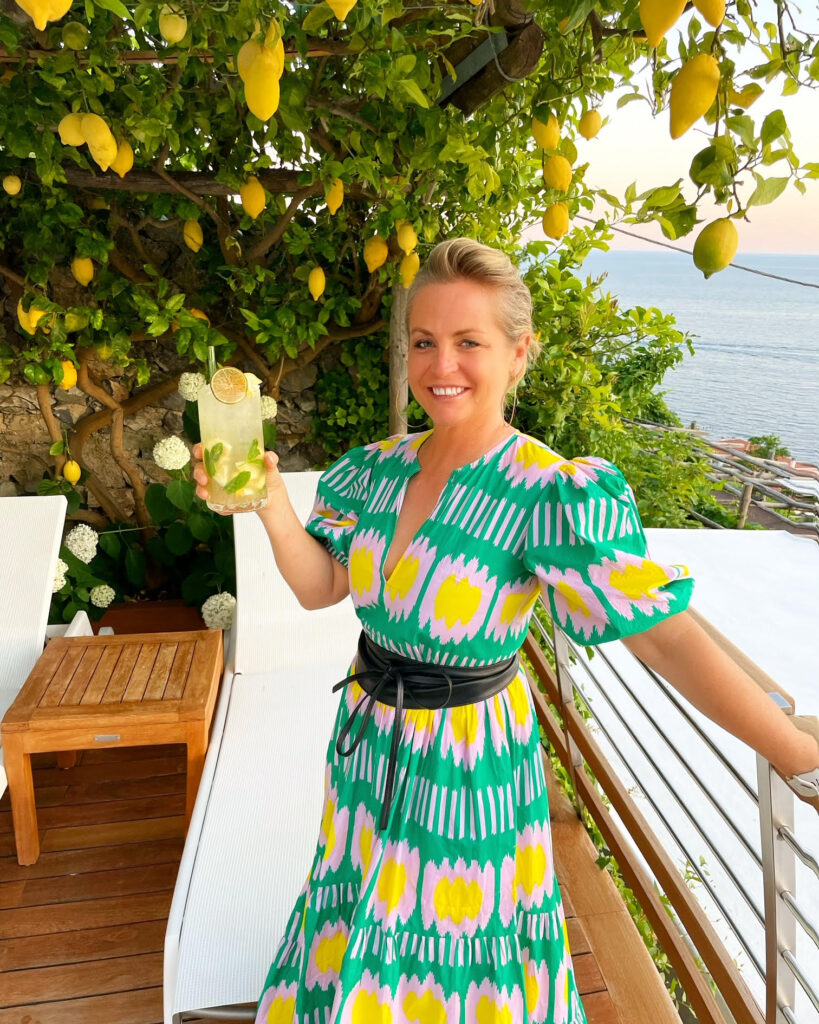
Founder and CEO of Azure Road, Lauren Mowery is a longtime wine, food, and travel writer. Mowery continues to serve on Decanter Magazine’s 12-strong US editorial team. Prior to joining Decanter, she spent five years as the travel editor at Wine Enthusiast. Mowery has earned accolades for her writing and photography, having contributed travel, drinks, food, and sustainability content to publications like Food & Wine, Forbes, Afar, The Independent, Saveur, Hemispheres, U.S. News & World Report, SCUBA Diving, Plate, Chef & Restaurant, Hotels Above Par, AAA, Fodors.com, Lonely Planet, USA Today, Men’s Journal, and Time Out, among others.
Pursuing her Master of Wine certification, she has also been a regular wine and spirits writer for Tasting Panel, Somm Journal, VinePair, Punch, and SevenFifty Daily. Mowery is a graduate of the University of Virginia and Fordham Law School, and she completed two wine harvests in South Africa.
Follow her on Instagram @AzureRoad and TikTok @AzureRoad
North Stars: Community Support, Heritage Value, Production & Consumption


